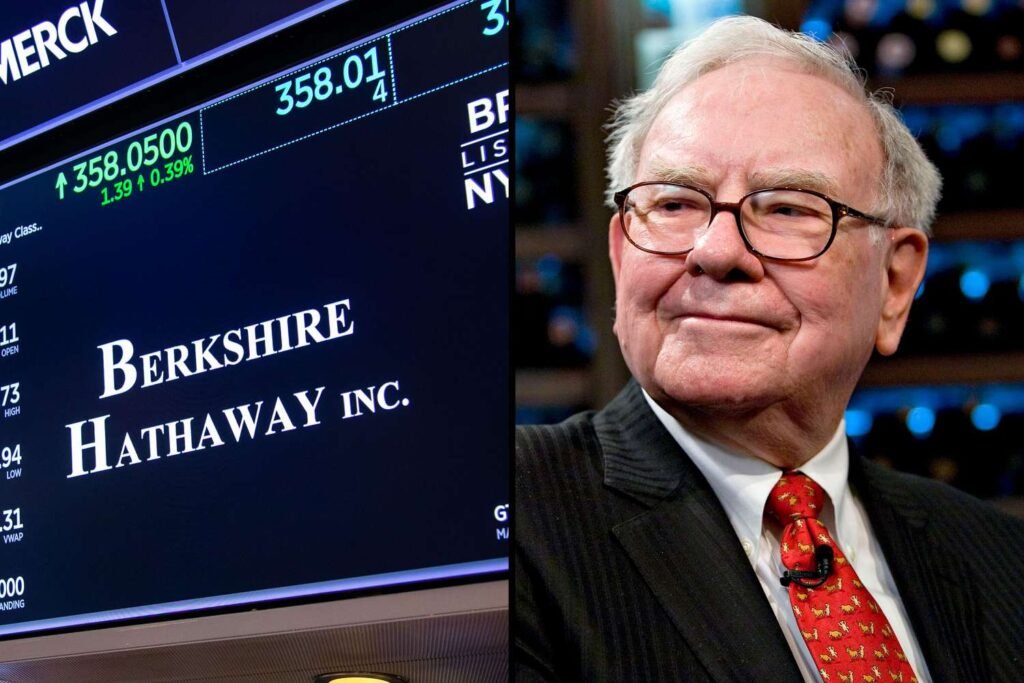:max_bytes(150000):strip_icc():format(jpeg)/Warren-Buffet-berkshire-hathaway-9a0292ce51ba4f44ac3dd940d01af096.jpg)
Over six decades, Warren Buffett’s Berkshire Hathaway (BRK.A) has compounded at roughly 20% a year, trouncing the S&P 500 and reaching a market cap of three-quarters of a trillion as of July 2025.
Now, a growing cohort of conglomerates hopes to follow the same playbook: use property-and-casualty insurance to generate low-cost “insurance float,” then pour that capital into a mix of public equities and wholly owned businesses.
Recent reporting from Barron’s highlighted the leading aspirants—Markel Group, Fairfax Financial, Loews, White Mountains, Howard Hughes Holdings, and Greenlight Capital Re—and asked the $1 trillion question: whether any of them can scale up to anything close to Berkshire’s heft.
Key takeaways
- Berkshire’s model—insurance float, public-equity portfolio, and a growing roster of operating companies—remains the template every would-be “Baby Berkshire” is trying to replicate.
- Some copycats now sport a market cap of several billion and have delivered impressive returns over the past decade, though their scale is still a tiny fraction of Berkshire’s.
- Even the most advanced contenders would have to grow 30x just to reach Buffett’s neighborhood—an achievement that would require decades of flawless execution.
Why Berkshire’s Formula Is So Hard to Copy
Berkshire has three structural advantages that few rivals can fully duplicate.
- First, its ever-growing insurance float—now over $170 billion—costs less than 2% a year, essentially giving Buffett ultra-cheap, quasi-permanent leverage.
- Second, the company can write multi-billion-dollar checks into public or private deals that simply aren’t available to smaller peers; that size advantage compounds returns by opening a different opportunity set.
- Finally, decades of decentralized culture mean operating subsidiaries can be run by entrepreneurs while capital is re-deployed at headquarters, minimizing bureaucracy.
Most wannabes can copy the insurance chassis, but matching all three legs of the stool simultaneously is a high bar—and the cost of float rises sharply when underwriting slips, as Fairfax and Greenlight Re have both experienced during catastrophe-heavy years.
Tip
“Float” refers to the premium dollars Berkshire’s insurance company holdings collect today but may not pay out for years, providing access to ultra-cheap capital to invest.
“Baby Berkshires:” Markel and Fairfax Lead the Pack
Richmond-based Markel Group (MKL) is perhaps the closest analog. Its $25 billion market cap, eclectic Markel Ventures portfolio, and annual “Markel Omaha Brunch” underscore the cultural homage. Markel has compounded book value at roughly 14% a year since 1995, respectable but still well shy of Berkshire’s long-term 20%. Recent results show underwriting profits and rising investment income, setting the stage for faster growth.
Toronto-listed Fairfax Financial (FFH) takes a more opportunistic, global approach. With a $38 billion market cap and a 5-year total-return CAGR near 90%, Fairfax still trades at under 10x forward P/E, giving it room for multiple expansion if execution stays solid. Still, it lacks the diversified non-insurance earnings stream that Berkshire enjoys.
Important
“Baby Berkshire” can also refer to Berkshire Hathaway’s lower-priced class-B shares (BRK.B).
Others Tweaking the Playbook
- Howard Hughes Holdings (HHH): HHH is largely a real estate development firm, but with aspirations to emulate Berkshire. Bill Ackman’s Pershing Square just injected $900 million and installed Ackman as chair, with plans to add an insurance arm to the real-estate developer. With a $4 billion market cap, the company offers plenty of runway, but financing costs for property deals make float harder to replicate, and real estate is cyclical.
- Loews (L) & White Mountains (WTM): Both control sizable insurers—CNA and a mix of specialty carriers, respectively—and trade at material discounts to net asset value. Yet with market caps of roughly $19 billion (Loews) and $4.5 billion (White Mountains), neither has shown a willingness to reinvest float aggressively outside its core industries, limiting compounding potential.
- Greenlight Capital Re (GLRE): David Einhorn’s reinsurer has finally returned to profitability, but with a market cap of just half a billion dollars and a history of volatile underwriting, it remains a very long shot. Still, a slimmer balance sheet and better investment returns give it optionality that value hunters find intriguing.
Tip
Like BRK.B’s extraordinarily high share price, many of the Baby Berkshires also allow their share prices to rise without splitting.
The Bottom Line
Berkshire’s trillion-dollar scale was built on six decades of standout underwriting, patient capital allocation, and a culture that attracts owners, not traders. Among the imitators, even the best-positioned “Baby Berkshires” are operating with one-tenth—or less—of Berkshire’s float and have far shallower benches of operating companies. Investors hoping for “the next Buffett Hathaway” may capture respectable returns, but matching Berkshire’s sheer magnitude is a feat unlikely to be repeated in this generation.

